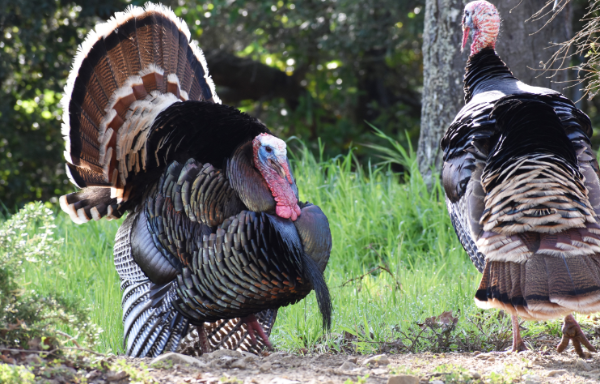
|
With the development of the 20-year national master stewardship agreement, the NWTF and USDA Forest Service aim to address many ecological challenges across the nation.
Primary objectives of the stewardship agreement are to create regional projects aimed at safeguarding communities, mitigating catastrophic wildfire, and enhancing forest health, wildlife habitats and water quality across national forests and grasslands.
The initial project of the stewardship agreement commenced in late March, in the Klamath National Forest of northern California. The implementation of the timber transport pilot is already demonstrating how this project will contribute toward achieving these goals.
The pursuit of these goals also directly contributes to the improvement of wildlife habitats, aligning with the NWTF’s mission of conserving wild turkeys and preserving the hunting tradition of our nation.
Over 110 years of fire suppression and a lack of active forest management in recent decades has produced areas, such as the Klamath National Forest, that are excessively dense, degraded wildlife habitats at risk of devastating wildfires. Severe wildfire can further reduce wildlife habitat quantity and quality through habitat conversion.
“The implementation of managed forest practices, such as forest thinning and prescribed fire, will have positive effects for wildlife and overall biodiversity,” said Patt Dorsey, NWTF director of conservation operations in the West.
A managed forest is a healthy forest, maintaining the area’s ecological integrity and ensuring the forest can continue to provide valuable resources for wildlife and future generations of people.
Partners and volunteers have begun a range of activities, such as mowing and felling of brush and juniper across 1,605 acres, 592 acres of juniper reduction, 264 acres of plantation thinning, and 866 acres of mastication for fuels reduction and the enhancement of wildlife habitats in the forest.
“It’s great to do this proactive habitat work,” Dorsey said. “We are thinning plantations and reducing fuels to help decrease the severity of future wildfires, and we are reinvigorating decadent shrubs that are low-quality wildlife forage.”
These management efforts will provide a range of benefits to wild turkey and other wildlife species, as the project promotes a more natural forest succession. Thinning over-stocked timber stands will free up canopy space to stimulate the understory growth of grasses and shrubs for cover, as well as providing turkey with openings for improved nesting, feeding and brooding.
Deer will also directly benefit from the project’s improvements to wildlife habitats. The California Deer Association, which is committed to enhancing California deer herds and other wildlife through habitat improvement and research, has actively contributed its efforts to the project in the Klamath National Forest.
 |
|
Photo credit: Adobe Stock We appreciate the partnership with the NWTF and are looking forward to seeing deer tracks and turkey tracks all over this country,” said Dale MacDougall, conservation director for the California Deer Association. “Healthy forests are more than green trees; they are complex, diverse and need to be managed.” Collaborative partnerships play a vital role in improving the quality of wildlife habitats on a larger scale, while also bolstering access to clean water, recreational activities and building resilient communities. These benefits highlight the significance of ongoing projects within the 20-year national master stewardship agreement. To learn more about the NWTF's efforts to address urgent conservation issues in the United States, you can read about America's Big Six here. |
|
National Wild Turkey Federation |
